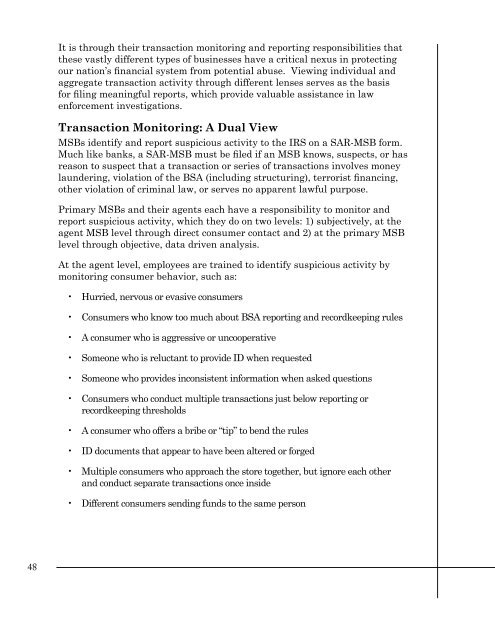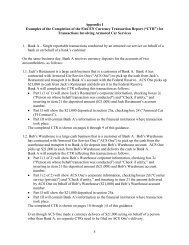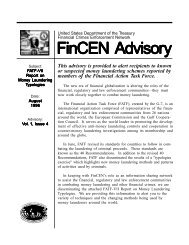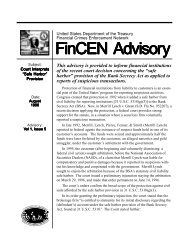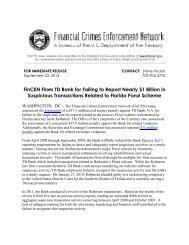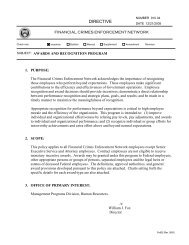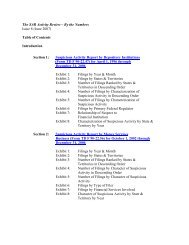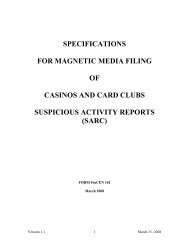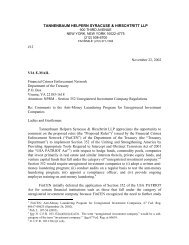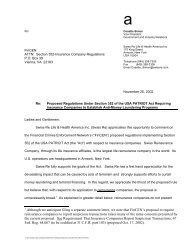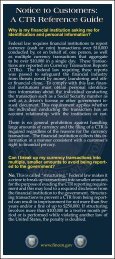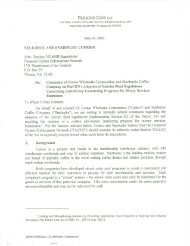FinCEN SAR Activity Review, Trends, Tips & Issues, Issue 10
FinCEN SAR Activity Review, Trends, Tips & Issues, Issue 10
FinCEN SAR Activity Review, Trends, Tips & Issues, Issue 10
Create successful ePaper yourself
Turn your PDF publications into a flip-book with our unique Google optimized e-Paper software.
4<br />
It is through their transaction monitoring and reporting responsibilities that<br />
these vastly different types of businesses have a critical nexus in protecting<br />
our nation’s financial system from potential abuse. Viewing individual and<br />
aggregate transaction activity through different lenses serves as the basis<br />
for filing meaningful reports, which provide valuable assistance in law<br />
enforcement investigations.<br />
Transaction Monitoring: A Dual View<br />
MSBs identify and report suspicious activity to the IRS on a <strong>SAR</strong>-MSB form.<br />
Much like banks, a <strong>SAR</strong>-MSB must be filed if an MSB knows, suspects, or has<br />
reason to suspect that a transaction or series of transactions involves money<br />
laundering, violation of the BSA (including structuring), terrorist financing,<br />
other violation of criminal law, or serves no apparent lawful purpose.<br />
Primary MSBs and their agents each have a responsibility to monitor and<br />
report suspicious activity, which they do on two levels: 1) subjectively, at the<br />
agent MSB level through direct consumer contact and 2) at the primary MSB<br />
level through objective, data driven analysis.<br />
At the agent level, employees are trained to identify suspicious activity by<br />
monitoring consumer behavior, such as:<br />
• Hurried, nervous or evasive consumers<br />
• Consumers who know too much about BSA reporting and recordkeeping rules<br />
• A consumer who is aggressive or uncooperative<br />
• Someone who is reluctant to provide ID when requested<br />
• Someone who provides inconsistent information when asked questions<br />
• Consumers who conduct multiple transactions just below reporting or<br />
recordkeeping thresholds<br />
• A consumer who offers a bribe or “tip” to bend the rules<br />
• ID documents that appear to have been altered or forged<br />
• Multiple consumers who approach the store together, but ignore each other<br />
and conduct separate transactions once inside<br />
• Different consumers sending funds to the same person


